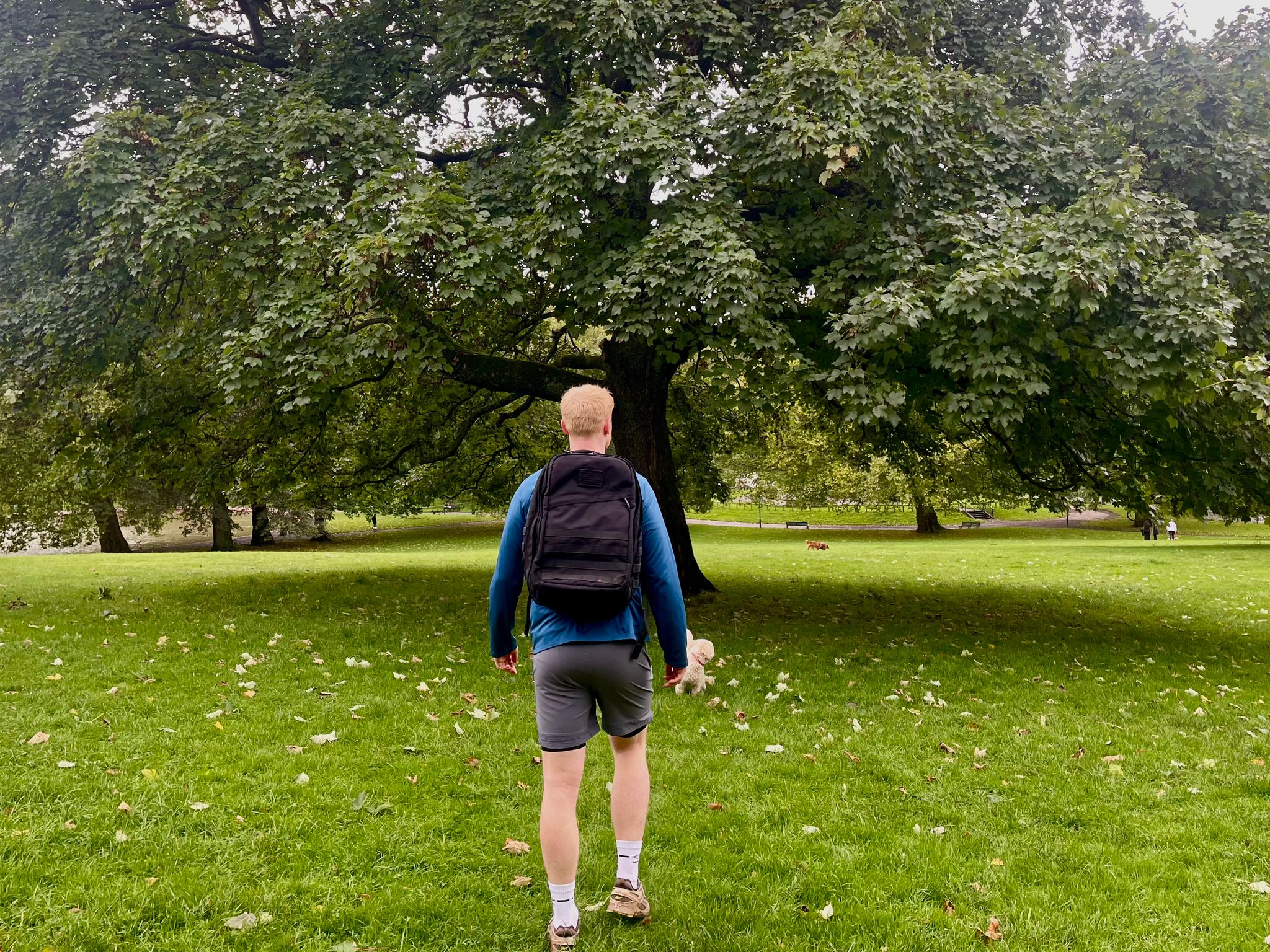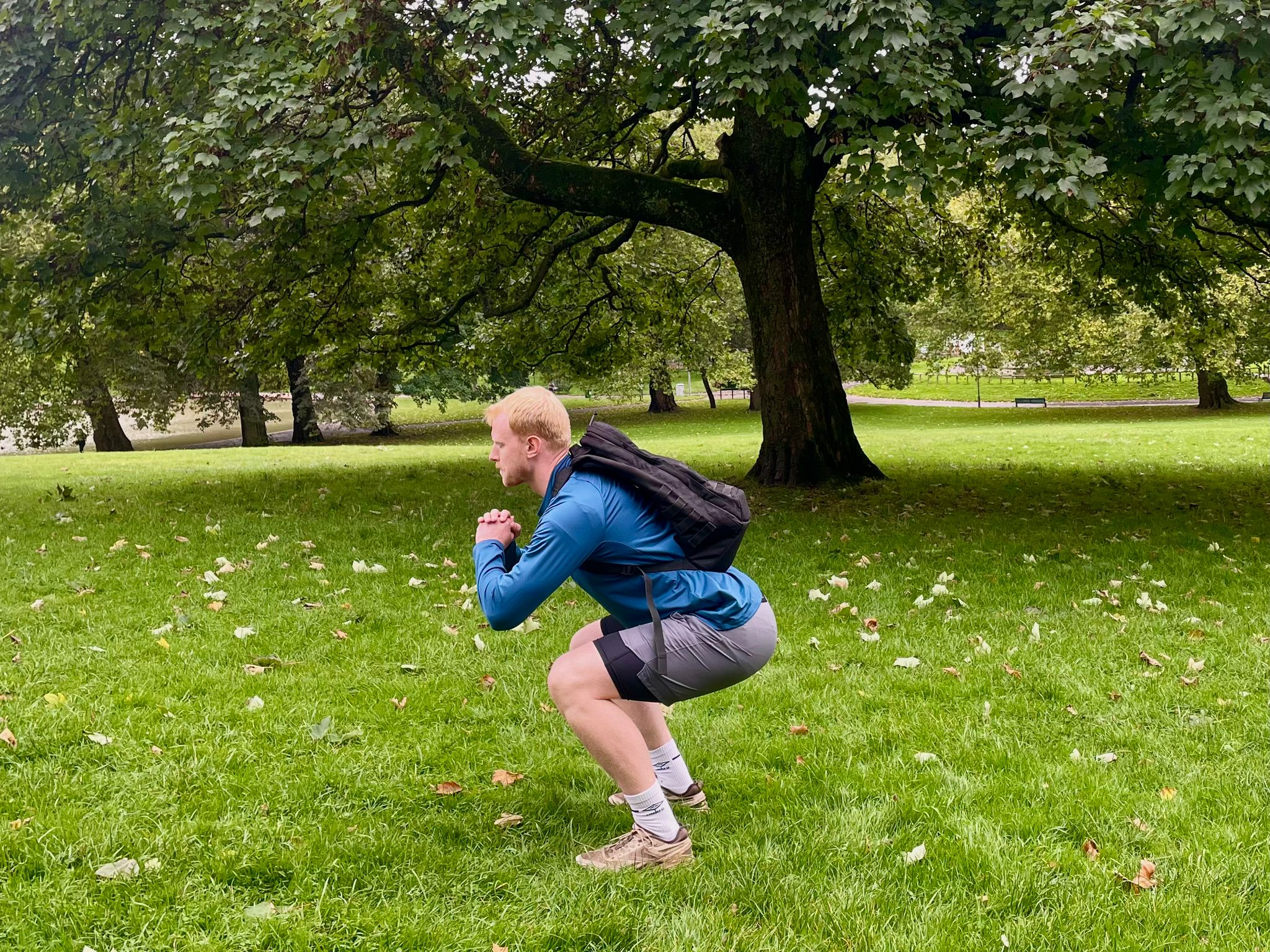The Independent's journalism is supported by our readers. When you purchase through links on our site, we may earn commission.
Swap the gym for this 30-minute rucking workout to strengthen your legs and core
Rucking can amplify the benefits of a regular walk, and this workout offers muscle-strengthening perks too

Your support helps us to tell the story
From reproductive rights to climate change to Big Tech, The Independent is on the ground when the story is developing. Whether it's investigating the financials of Elon Musk's pro-Trump PAC or producing our latest documentary, 'The A Word', which shines a light on the American women fighting for reproductive rights, we know how important it is to parse out the facts from the messaging.
At such a critical moment in US history, we need reporters on the ground. Your donation allows us to keep sending journalists to speak to both sides of the story.
The Independent is trusted by Americans across the entire political spectrum. And unlike many other quality news outlets, we choose not to lock Americans out of our reporting and analysis with paywalls. We believe quality journalism should be available to everyone, paid for by those who can afford it.
Your support makes all the difference.If you want to build a stronger, fitter body without stepping foot inside a gym, this rucking workout could be just the thing you’ve been looking for.
From the mind of Nichele Cihlar, director of training at rucking specialists GoRuck, it combines strength-boosting exercises with conventional rucking – walking with an added weight on your back – to deliver a whole host of health and fitness perks.
Better yet, the only equipment you need to take this routine for a spin is a comfortable backpack. If you’re a seasoned strength training fan, you might want to use a purpose-built rucksack (£198, Goruck.eu) which can carry some heavier weight plates, but beginners need only throw a few heavier household items in their favourite gym bag.
Whether because you’re short on time or you’re not much of a gym goer, many people prefer to exercise outdoors and for shorter periods of time. This 30-minute workout delivers on both fronts.
Below, Cihlar explains how to try the workout for yourself, and dives into the many benefits of rucking.
How to do trainer Nichele Cihlar’s rucking workout
To do this workout for yourself, you simply walk one mile while wearing a weighted rucksack. At the start of the walk, and after every 400m, you’ll use the backpack to perform the following strength moves. It doesn’t matter where you’re walking, just make sure that when you stop, you have enough space to do 20 repetitions of each move while carrying your weighted backpack.
You might also want to use your phone or a fitness tracker to measure your distance and time so that you’re stopping at approximately every 400m interval and giving yourself ample time to recover.
Each time you stop, perform the following moves:
- Squat x20
- Overhead press x20
If you want a bonus challenge, try performing a suitcase carry for the final 400m. This involves holding the backpack in one hand, as you would a suitcase, and maintaining an upright posture while walking with it. Hold it for 200 metres in one hand, then switch sides and repeat.

Benefits of rucking
It’s no secret that walking alone offers plenty of health benefits – recent research identified 8,000 as the number of steps you need to take per day to “significantly reduce the risk of premature death”. It can also boost your mood while raising your heart rate for cardio perks and elevated calorie burn.
By adding weight to your walk, rucking amplifies several of these effects. Moving more weight requires more energy, which in turn commands more oxygen consumption. So, when rucking, your heart rate is sent higher than it would be during a normal walk, triggering greater calorie burn and cardiovascular fitness gains. And that’s not all.
“We spend so much time hunched forward, whether that’s at the computer, driving or on our cellphones,” says Cihlar. “Rucking really helps build the upper back postural muscles, which is great. It also helps develop your core strength, because you’re holding that weight on your shoulders.”
She swears by the mood-boosting benefits of walking with weights too: “You never leave the house to go for a ruck and come back in a bad mood.”
And finally, the squats and overhead presses in this workout can develop strength and muscle in your legs, shoulders and triceps (the muscles running down the back of your upper arm). Not bad for a 30-minute commitment.
What weight to use when rucking
Cihlar says weights of 15kg for men and 10kg for women are often seen as the default loads for rucking. Regular ruckers may even experiment with loads of up to 30 per cent of their body weight to deliver more of a strength-building stimulus.
But, especially if you’re a beginner, Cihlar stresses that the most important thing is to find a weight that works for you. That’s why she recommends starting light with a comfortable backpack containing a water bottle or other household items, then working your way up as you grow more confident.
So, with the barrier to entry low and the potential payout high, what are you waiting for? Strap in and step to it with this time-savvy full-body workout.
Read more: Why squats should be a staple feature in your workouts, according to an expert coach




Join our commenting forum
Join thought-provoking conversations, follow other Independent readers and see their replies
Comments